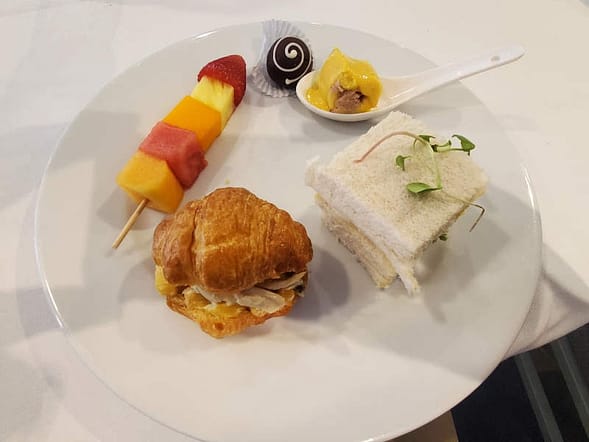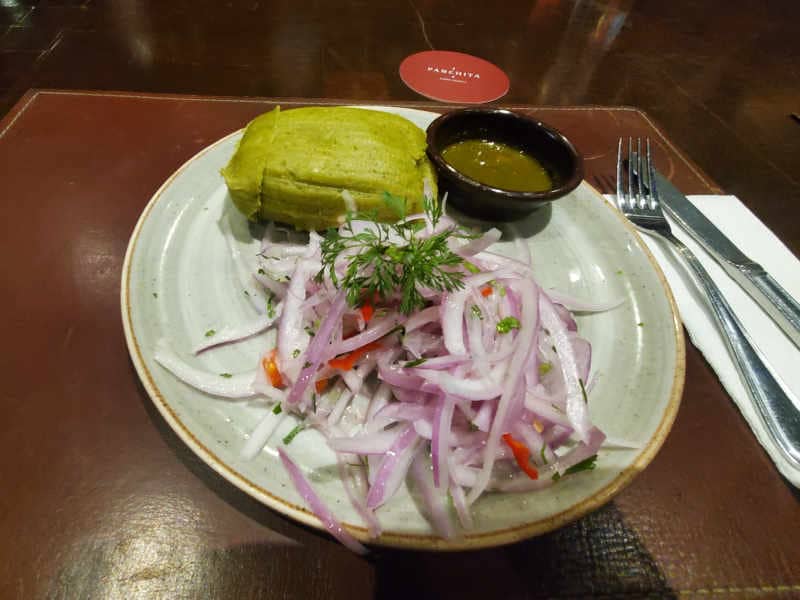On the second day I have already started to fall behind but there is a very good reason for that which you will have to wait to find out what that is! We started the day with a lesson on the Peruvian Education System. Like the previous day, we went through a tremendous amount of information in a short period of time. We did get to enjoy another delicious mid-morning snack. I want to make it clear that since I got here three days ago I have yet to be hungry once. So much food.

In Peru there are three levels to regular public education. Educación Inicial includes Pre-K (ages 0-2) and K (3-5). For Pre-K the hours are flexible and depend on the type of program. In kindergarten students are required to have five hours of instruction per day for a total of 25 hours per week and 900 hours per year. Educación primaria includes elementary students and they are required to have six hours of instruction per day for a total of 30 hours a week and at least 1100 hours a year. Educación secondaria includes the last five years of school and students receive seven hours of instruction per day, 35 hours a week, and at least 1200 hours a year. Courses include: math, communication, art, personal social development, physical education, religious education, science, and technology. In the table below you will see a breakdown of how students spend each week.
In many ways education in Peru is similar to that of the United States. Education is compulsory for all students ages 6 to 16/17. Students go to school most of the year but get some time off during their summer. Their school year runs from March to December. In 2010 they rolled out their new learning standards which contain seven cross-cutting concepts. These concepts are:
- Rights-based approach – promotes the recognition of rights and duties of the student and promotes other democratic values such as liberty, responsibility, and collaboration
- Inclusive and diversity aware approach – teaches students to value all people equally and to avoid discrimination, exclusion, and inequality of opportunities.
- Intercultural approach – promotes the interchange of ideas and experiences emerging from diverse cultural perspectives
- Gender equality approach: recognizes the need for equality of opportunity between males and females
- Environmental approach – seeks to educate students to take care of the environment
- Common good approach – promotes the development of socio-emotional skills such as empathy, solidarity, justice and equity
- Pursuit of excellence approach – incentivizes students to give their best effort to achieve their goals and contribute to their community
Peru is working towards improving their educational system and some issues and trends that are relevant to the present-day dialogue include expanding coverage in early childhood education, bilingual intercultural education, special basic education, high-performance schools, alternative basic education, evaluation/assessment, curriculum, and professional development related to instructional technology. One of the big questions we have had for educations in Peru is about special education in their schools. It has been difficult to get a straight answer and the answers we do get often try to deflect. From what we have gathered, students are not tested to determine if they have any learning needs and there really is not the support staff in schools to provide the accommodations these students would need.
Our lunch was absolutely amazing. Seriously. The food in Peru is delicious. If you like food, visit this country and prepare to never look at food the same way! After our appetizer and main dish we were very full and we thought we would not have to deal with dessert. Then on our way out we were handed take out bags each with a giant slice of flan. So much food.


After lunch we went to the US embassy in Peru. We were warned many times that photographing the embassy is a serious offense and could get us arrested and deported. This was so unfortunate because there were mountains behind the embassy and we couldn’t get any pictures of them! I tried to get some pictures from the bus but between glare and movement they didn’t turn out well. Pictures in Peru are tough to take because of the smog as well. There is a lot of moisture in the air due to the proximity to the ocean and there is fairly significant air pollution.

We had to go through two separate security checkpoints at the embassy. They took any electronics items we had and we could not even go to the restroom without an escort. While there we met with an official from the Public Affairs Office, a member of American Citizen Services, and several administrators from area schools. We were all given this earpiece which made us feel like secret agents. The earpiece was for listening to translations between Spanish and English. Any time someone spoke, the translator translated it into the opposite language. This was very impressive to see. The translator could listen to one language while translating to the other. The administrators spoke about education in Peru and we spoke about what we hoped to get out of the Fulbright program. The embassy prepared a table full of food for us but unfortunately there are no pictures. So much food.
The real excitement begins tomorrow.

